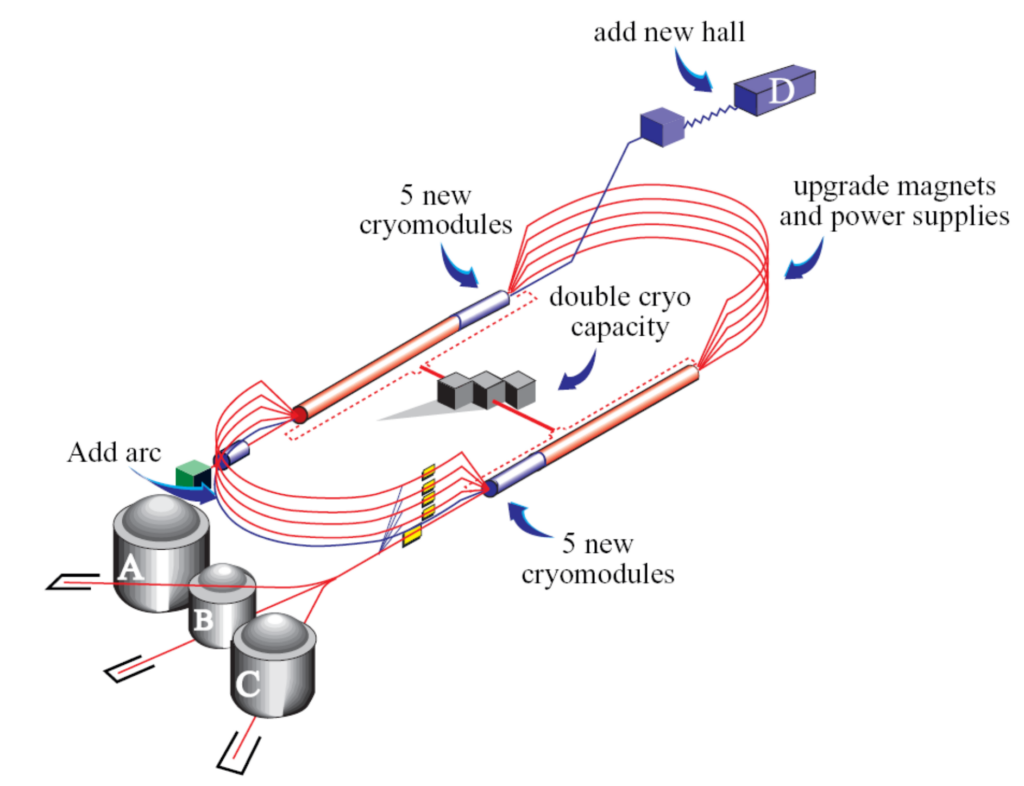JLAB12 is an INFN experiment that brings together all Italian research activities conducted at the Thomas Jefferson National Accelerator Facility (JLab) in the United States. Jefferson Lab is one of the world’s leading centres for nuclear physics research and hosts the CEBAF (Continuous Electron Beam Accelerator Facility), a 12 GeV electron accelerator featuring four experimental halls (A, B, C, and D), each equipped with state-of-the-art particle detectors.

The primThe goal of the experiment is the study of the structure and dynamics of hadrons and nuclei through the scattering of (longitudinally polarized) 12 GeV electrons on (polarized) fixed nuclear targets. More than 50 Italian physicists and engineers collaborate with the broader international JLab community, comprising over 1300 researchers, to conduct pioneering experiments and develop a comprehensive hadronic physics program.
JLAB12’s research focuses on a wide range of topics, including the internal structure of the nucleon and nuclear form factors, nucleon structure functions, electromagnetic and weak electron-hadron interactions, meson and baryon spectroscopy, the search for hybrid configurations, and explorations of physics beyond the Standard Model.
These experimental efforts are strongly supported by the Italian theoretical physics community, with more than 30 researchers dedicated to the study of Quantum Chromodynamics (QCD), the theory describing the structure of hadrons, and to the interpretation of experimental data.
The INFN Roma Tor Vergata group plays an active role in several key areas of the experiment. These include the development and application of frozen-spin polarized HD targets (HDice), the measurement of HD gas purity using Raman scattering techniques, and contributions to the construction of the Forward Tagger for the CLAS12 detector. The group is also involved in the study of photoproduction processes on polarized nucleons, the search for hybrid baryons through kaon electroproduction, and the investigation of dark photons within the HPS experiment.
Reference:
National webpage













































































































